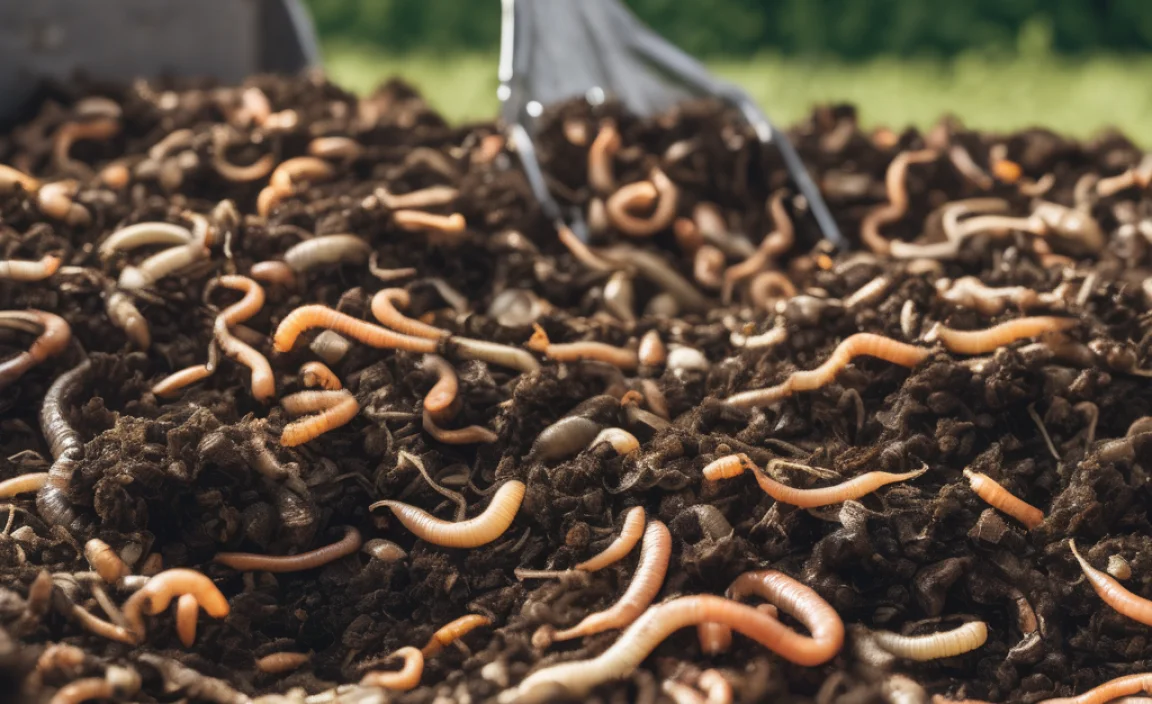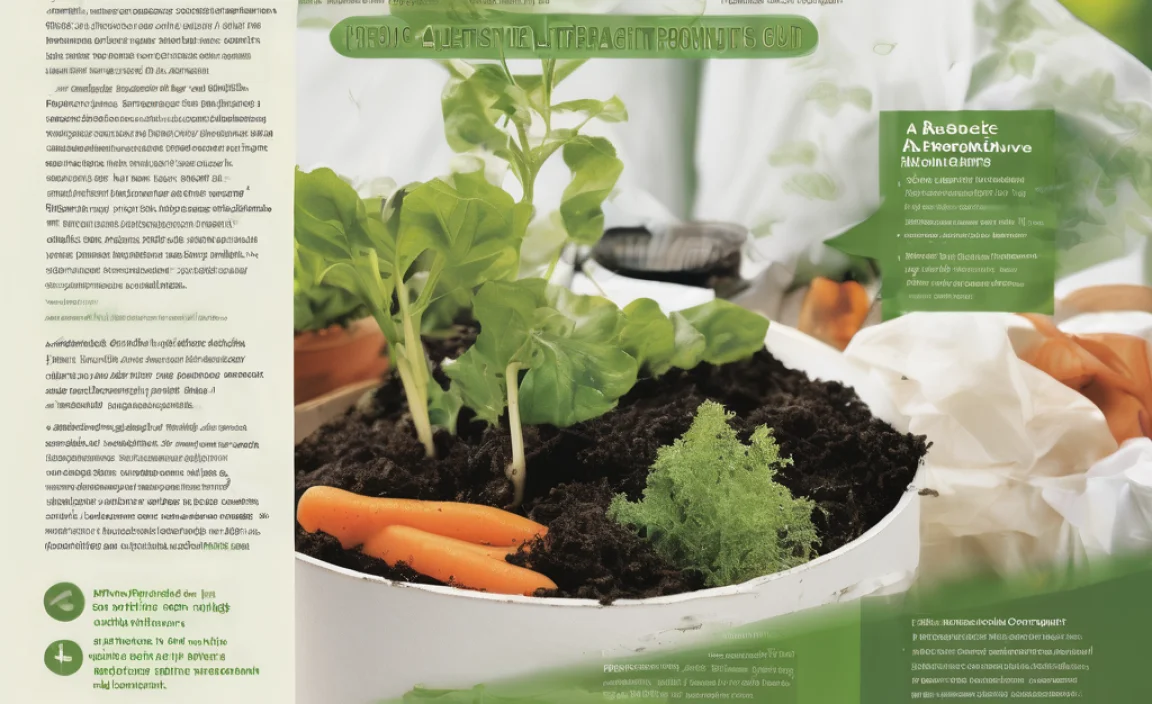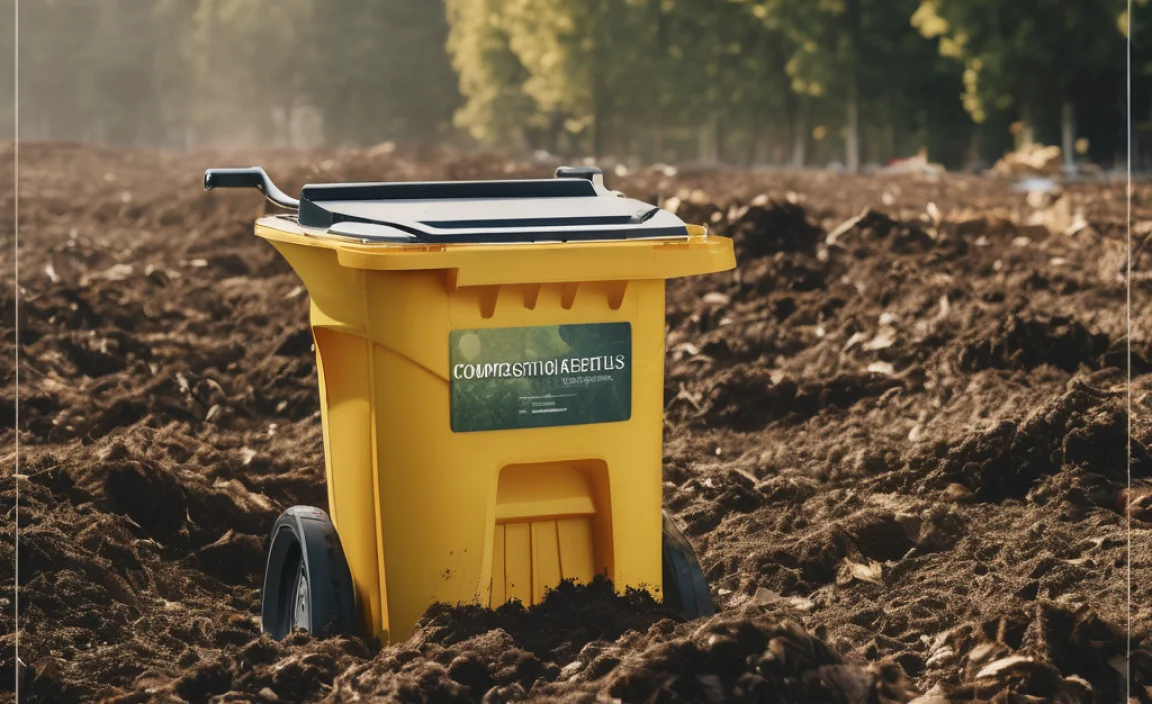Quick Summary:
Making your own mold sinkers is easier than you think! You’ll need a mold, lead, a heat source, and some basic safety gear. Melt the lead carefully, pour it into the mold, let it cool, and then remove your new sinker. It’s a great way to save money and customize your fishing gear. Just remember to always work in a well-ventilated area and wear proper safety equipment.
Ever find yourself constantly needing new sinkers? They always seem to get lost or snagged! Buying them can add up, and sometimes the store doesn’t have exactly what you need. That’s why learning to make your own mold sinkers is so useful.
It’s a simple process that lets you customize the weight and shape of your sinkers. Plus, it’s a fun DIY project. This guide will walk you through each step, from gathering your materials to casting your very own sinkers. Get ready to save money and improve your fishing game!
Why Make Your Own Mold Sinkers?
There are several good reasons to consider making your own mold sinkers. Let’s look at a few:
- Cost Savings: Buying sinkers regularly can be expensive. Making them yourself significantly reduces costs.
- Customization: You can create sinkers of specific weights and shapes to suit your fishing needs.
- Availability: No more running to the store. You can make sinkers whenever you need them.
- Recycling: You can recycle old lead items into useful sinkers.
- Hobby: It’s a satisfying and engaging DIY project.
What You’ll Need
Before you start, gather all the necessary materials and tools. Here’s a comprehensive list:
- Sinker Mold: Choose a mold with the size and shape of sinkers you want to make.
- Lead: You can use lead scraps, old wheel weights, or purchase lead ingots.
- Heat Source: A propane torch or a lead melting pot works well.
- Metal Ladle: For safely pouring the molten lead.
- Safety Glasses: To protect your eyes from splashes.
- Heat-Resistant Gloves: To handle hot tools and molds.
- Ventilation: Work in a well-ventilated area or use a respirator.
- Metal Bucket with Water or Sand: For cooling the sinkers.
- Wire Cutters or Pliers: To remove sinkers from the mold.
- File or Sandpaper: To smooth any rough edges on the finished sinkers.
Step-by-Step Guide to Making Mold Sinkers
Follow these steps carefully to create your own mold sinkers safely and effectively.
Step 1: Prepare Your Workspace
Safety is paramount when working with molten lead. Choose a well-ventilated outdoor area or a garage with open doors. Clear the area of any flammable materials.
- Set up your heat source on a stable, non-flammable surface.
- Place your metal bucket filled with water or sand nearby for cooling the sinkers.
- Keep your safety glasses, gloves, and any other safety gear within easy reach.
Good ventilation is crucial because melting lead can release harmful fumes. If you’re working indoors, use a respirator designed for lead particles.
Step 2: Prepare the Lead
Clean the lead pieces you’ll be using. Remove any dirt, rust, or other contaminants. Smaller pieces of lead will melt more quickly and evenly.
- If using old wheel weights, remove any non-lead components (like clips).
- Cut or break the lead into manageable pieces for easier melting.
Be aware of the risks of lead exposure. Always wash your hands thoroughly after handling lead, even if you wear gloves.
Step 3: Heat the Lead
Place the lead pieces into your melting pot or a metal container suitable for heating. If using a propane torch, direct the flame onto the lead until it begins to melt. If using a melting pot, follow the manufacturer’s instructions.
- Heat the lead slowly and evenly to prevent splattering.
- Use a metal rod or spoon to stir the lead occasionally, ensuring it melts uniformly.
- Continue heating until the lead is completely molten and has a liquid consistency.
Keep a close eye on the lead as it melts. Avoid overheating, which can cause excessive fumes. The ideal temperature for pouring lead is around 621°F (327°C). You can use a thermometer to monitor the temperature, but it’s often judged by the lead’s fluidity.
Step 4: Prepare the Sinker Mold
Before pouring the molten lead, prepare your sinker mold. This step is crucial for creating clean, well-formed sinkers.
- Ensure the mold is clean and dry. Any moisture can cause the lead to splatter dangerously.
- Lightly lubricate the mold with a mold release spray or graphite powder. This helps the sinkers release easily and prevents sticking.
- Make sure the mold is properly closed and secured.
A well-prepared mold will produce better sinkers and extend the life of the mold itself.
Step 5: Pour the Molten Lead
Using your metal ladle, carefully scoop the molten lead from the melting pot. Slowly and steadily pour the lead into the sinker mold. Fill each cavity completely.
- Pour the lead in a continuous stream to avoid air pockets.
- If the lead starts to cool and thicken, reheat it slightly before continuing.
- Be cautious of splashes and spills. Keep your safety glasses on and hands protected.
Pouring molten lead requires a steady hand and careful attention. Practice makes perfect, so don’t be discouraged if your first few attempts aren’t perfect.
Step 6: Cool the Sinkers
Allow the lead to cool in the mold for several minutes. The cooling time will depend on the size of the sinkers and the ambient temperature. The lead should solidify and lose its molten appearance.
- You can speed up the cooling process by placing the mold in front of a fan or gently submerging it in the bucket of water or sand.
- Ensure the lead is completely solid before opening the mold.
Cooling the sinkers properly ensures they retain their shape and don’t deform when removed from the mold.
Step 7: Remove the Sinkers
Once the lead has cooled and solidified, carefully open the sinker mold. Use wire cutters or pliers to remove the sinkers. They should come out easily if the mold was properly lubricated.
- If the sinkers are stuck, gently tap the mold with a rubber mallet or try using a small pry bar to loosen them.
- Avoid using excessive force, which can damage the mold.
Removing the sinkers cleanly is the final step in the casting process. Inspect each sinker for any imperfections.
Step 8: Finishing Touches
After removing the sinkers from the mold, inspect them for any rough edges or imperfections. Use a file or sandpaper to smooth these areas.
- File down any sharp edges or burrs to make the sinkers easier to handle.
- If desired, you can paint or coat the sinkers for added protection and visibility.
Finishing your sinkers ensures they are safe to handle and perform optimally when fishing.
Safety Precautions
Working with molten lead can be dangerous if proper precautions are not taken. Here’s a detailed breakdown of essential safety measures:
- Ventilation: Always work in a well-ventilated area to avoid inhaling lead fumes. If working indoors, use a respirator.
- Eye Protection: Wear safety glasses to protect your eyes from splashes of molten lead.
- Hand Protection: Use heat-resistant gloves to handle hot tools and molds.
- Clothing: Wear long sleeves and pants to protect your skin from burns.
- Footwear: Wear closed-toe shoes to protect your feet.
- No Distractions: Avoid distractions and focus on the task at hand.
- Children and Pets: Keep children and pets away from the work area.
- Cleanliness: Wash your hands thoroughly after handling lead, even if you wear gloves.
- First Aid: Have a first aid kit nearby in case of burns or other injuries.
- Waste Disposal: Dispose of lead waste properly according to local regulations.
Adhering to these safety precautions will minimize the risk of accidents and ensure a safe and enjoyable sinker-making experience. If you are unsure about any part of the process, consult with someone experienced in working with molten metals.
Troubleshooting
Even with careful preparation, you might encounter some issues when making mold sinkers. Here are some common problems and how to fix them:
| Problem | Possible Cause | Solution |
|---|---|---|
| Sinkers are not filling completely | Lead is not hot enough; Mold is not properly vented | Increase heat; Ensure mold vents are clear |
| Sinkers are sticking in the mold | Mold is not lubricated; Lead has cooled too much | Apply mold release; Reheat lead and mold |
| Sinkers have rough surfaces | Mold is dirty; Lead is contaminated | Clean mold thoroughly; Use clean lead |
| Lead is splattering when poured | Mold is wet; Lead is overheating | Dry mold completely; Reduce heat |
| Sinkers are brittle or cracking | Lead is contaminated; Cooling too quickly | Use clean lead; Allow sinkers to cool slowly |
By addressing these common issues, you can improve the quality of your sinkers and streamline the manufacturing process.
Choosing the Right Mold
Selecting the right sinker mold is crucial for creating sinkers that meet your specific fishing needs. Here are some factors to consider:
- Type of Fishing: Consider the type of fishing you’ll be doing (e.g., freshwater, saltwater, deep sea).
- Weight Range: Determine the range of sinker weights you need.
- Shape: Choose a shape that suits your fishing style (e.g., pyramid, bank, egg).
- Material: Molds are typically made from aluminum or steel. Aluminum molds heat up quickly, while steel molds are more durable.
- Cavity Count: Decide how many sinkers you want to make at a time. Molds with multiple cavities can speed up the process.
- Ventilation: Ensure the mold has adequate ventilation to allow air to escape during pouring.
- Ease of Use: Choose a mold that is easy to open, close, and handle.
Different sinker shapes are better suited for various fishing conditions. Pyramid sinkers are ideal for sandy bottoms, while bank sinkers work well in rocky areas. Egg sinkers are versatile and can be used in a variety of situations.
Lead Alternatives
While lead is a common material for making sinkers, it’s also toxic. If you’re concerned about the environmental impact of lead, consider using alternative materials.
- Tungsten: Tungsten is a dense, non-toxic metal that makes excellent sinkers. It’s more expensive than lead but offers superior performance.
- Steel: Steel is another non-toxic option that is denser than lead. Steel sinkers are durable and environmentally friendly.
- Bismuth: Bismuth is a brittle metal that can be used as a lead alternative. It’s less dense than lead but still provides adequate weight.
Switching to lead alternatives can reduce your environmental footprint and ensure responsible fishing practices. Always check local regulations regarding the use of lead sinkers, as some areas have restrictions or bans.
Tips for Better Sinkers
Here are some additional tips to help you create high-quality sinkers:
- Preheat the Mold: Warming the mold before pouring can help the lead flow more smoothly and prevent imperfections.
- Use a Sprue Plate: A sprue plate can help direct the flow of lead into the mold and reduce waste.
- Clean the Mold Regularly: Keeping the mold clean and free of debris will ensure consistent results.
- Experiment with Different Weights and Shapes: Try different sinker designs to find what works best for your fishing style.
- Keep Records: Track your sinker designs, weights, and performance to improve your process over time.
By following these tips, you can refine your sinker-making skills and produce sinkers that meet your exact specifications.
FAQ
What kind of lead should I use?
You can use lead scraps, old wheel weights (remove any non-lead parts), or buy lead ingots. Just make sure it’s clean and free of dirt.
How hot does the lead need to be?
Lead melts at around 621°F (327°C). It should be completely liquid and flow easily when you pour it.
Do I really need to wear safety glasses?
Yes! Molten lead can splash, and you don’t want it getting in your eyes. Safety glasses are a must.
What if the lead won’t come out of the mold?
Make sure you lubricate the mold with mold release spray or graphite powder before pouring. If it’s still stuck, gently tap the mold with a rubber mallet.
How do I clean up after making sinkers?
Let everything cool down completely. Then, carefully sweep up any lead scraps and dispose of them properly. Wash your hands thoroughly.
Can I make sinkers indoors?
It’s best to work outdoors or in a well-ventilated garage. Lead fumes can be harmful, so good ventilation is crucial.
What are some alternatives to lead for making sinkers?
Tungsten, steel, and bismuth are great non-toxic alternatives. They might be a bit more expensive, but they’re better for the environment.
Conclusion
Making your own mold sinkers is a rewarding DIY project that saves you money and lets you customize your fishing gear. By following these steps and taking the necessary safety precautions, you can create high-quality sinkers tailored to your specific needs.
Remember to always prioritize safety when working with molten lead. With practice and patience, you’ll be able to produce sinkers that enhance your fishing experience and reduce your environmental impact. So grab your materials, set up your workspace, and start casting your own custom sinkers today!





